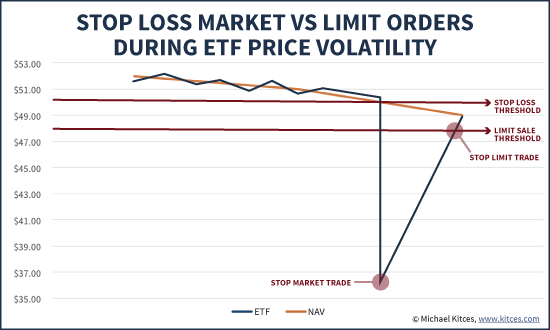
Dr. Deming found that the focus on Check is more about the implementation of a change, with success or failure. His focus was on predicting the results of an improvement effort, studying the actual results, and comparing them to possibly revise the theory. As with all initiatives, careful planning, implementation, and monitoring are the difference between a successful project and a flop.

As all of these names suggest, the PDCA cycle is a loop rather than an end-to-end process. The goal is to improve on each improvement in an ongoing process of learning and growth. In PDCA, Plan is defined qualitatively and devoid of any scope for setting a concentrated target value (unlike in E3P3). In PDCA, implementation is geared toward only finding a solution to the present issue/problem, with no set target to match the requirements of the client and competition.
The Plan, Do, Check, Act steps
Because you’re constantly identifying areas where your processes can be improved, you can create a more streamlined workflow that cuts down on wasted time and resources. Total Quality Management (TQM) is a framework that ensures that your products meet or exceed customer expectations. It emphasizes the need to systematically identify and address quality issues. The Lean methodology is a continuous improvement framework that was originally developed for manufacturing. And it does that by streamlining processes and eliminating non-value-added activities. During this step in the iterative process, you will define your project plan and align on your overall project objectives.
- Then identify the role responsible for each step in your process and the tools used.
- Good incremental design is also iterative because you need to be able to respond to customer feedback and pivot if necessary.
- When any organization executes basic process thinking approaches, the main emphasis is on PDCA.
- If you are working with vendors on any project, you need to be clear about the requirements and timeline.
- Typically, non-iterative processes require more time during the conceptualization and creation phase, so that everything works as intended during the testing phase.
The iterative process refines a product through repeated adjustment cycles. In math, an iterative procedure identifies the solution to a problem based on an initial guess. The Plan-Do-Check-Act model is a particularly useful tool for companies who follow the Kaizen method. Kaizen is an organizational mindset and culture focused on small, frequent changes that lead to significant improvements over time. The Plan-Do-Check-Act model helps break companies out of stagnancy and transition to a system of continuous improvement.
Hidden hazards in your Management System
Typically, non-iterative processes require more time during the conceptualization and creation phase, so that everything works as intended during the testing phase. PDCA is a four-stage iterative approach to continually improve processes. By collecting and analysing the KPIs and the data, it will be clear if the initiatives which of the following is iterative four stage approach for continually improving the process have had the desired effect or if there are adjustments that need to be made. This is done by comparing the result to the expected outcome that was decided in the Plan. In the example, the management in your organisation can analyse the result of the KPI on how many courses have been completed per employee.
India’s Internet Economy to Reach $1 tn by 2030 – Indian Retailer
India’s Internet Economy to Reach $1 tn by 2030.
Posted: Fri, 09 Jun 2023 12:16:43 GMT [source]
The next step of the Plan Do Check Act cycle requires that you execute the plan. However, you should also be alert and anticipate some unpredictable problems that could occur. If the plan consists of big organisational changes, it could be wise to first test the plan on a small scale to avoid disruption. Here, the awareness courses are rolled out to your employees in the order and pace that you determined in the planning stage. Make sure to retain the relevant data of how many employees are completing the courses. The Plan Do Check Act cycle is a model that your organisation can use for improving a continuous process.
Phases of PDCA/PDSA
In addition to reducing waste, continuous improvement can also help you save money in other ways. For example, by streamlining your process, you may be able to reduce the amount of inventory you need on hand. And by identifying errors early, you can avoid the cost of fixing them later on. Six Sigma is a statistical framework that helps you identify and eliminate defects in your process.
Which of the following is the iterative method in forecasting?
Answer and Explanation: As we know that an iterative process used for finding the expert consensus of a given question in forecasting is known as the Delphi method.
Continue building upon the previous iteration until you get to a deliverable you’re happy with. Organizations involved with business process improvement use different methodologies, approaches, tools and techniques for implementing quality management programs. These management programs have different names in different organizations – TQM (total quality management), Six Sigma, operational excellence, etc. Regardless of the approach and name used, each organization needs to manage a proper selection and combination of its different approaches, tools and techniques to ensure a successful implementation process. Organizations that are looking for opportunities for business process improvement often begin with PDCA or Plan, Do, Check and Act, an iterative four-step management method.
Continuous improvement methods
They can then explore and validate their assumptions through the process of ideation, prototyping, testing, analyzing, and refining. This process, called rapid prototyping or spiral prototyping, allows designers to find success more quickly and involve stakeholders and clients more effectively. A variation of the iterative model, the iterative design process allows designers to create, test, analyze, and refine ideas quickly during any phase of the design process. The iterative process drives the Scrum methodology of development, where the goal is to deliver maximum business value in the minimum amount of time.
How Technology is Enabling D2C Brands to Build Loyalty with … – Indian Retailer
How Technology is Enabling D2C Brands to Build Loyalty with ….
Posted: Mon, 12 Jun 2023 06:48:37 GMT [source]
Shortening this time period in emergency situations is critical to saving lives and improving patient outcomes. If the plan did not pan out as expected, you can cycle back to the planning stage to make adjustments and prepare for a new trial. Your evaluation at this stage will guide your decisions in the next step, so it is important to consider your results carefully. During this stage, an affinity diagram can help you and your colleagues organize a large number of ideas into groups. Once you have determined your course of action, write down your expected results. You will check your results against your hypothesis and expectations in the “Check” stage.
What is the iterative 3 step process through which a theory usually goes through?
Each iteration of the design process goes through three stages: creation, testing, evaluation. What are the 3 steps of iterative design model? We take the first screen and make a guess on how it's going to work based on our initial observation, research, and requirements we gathered.